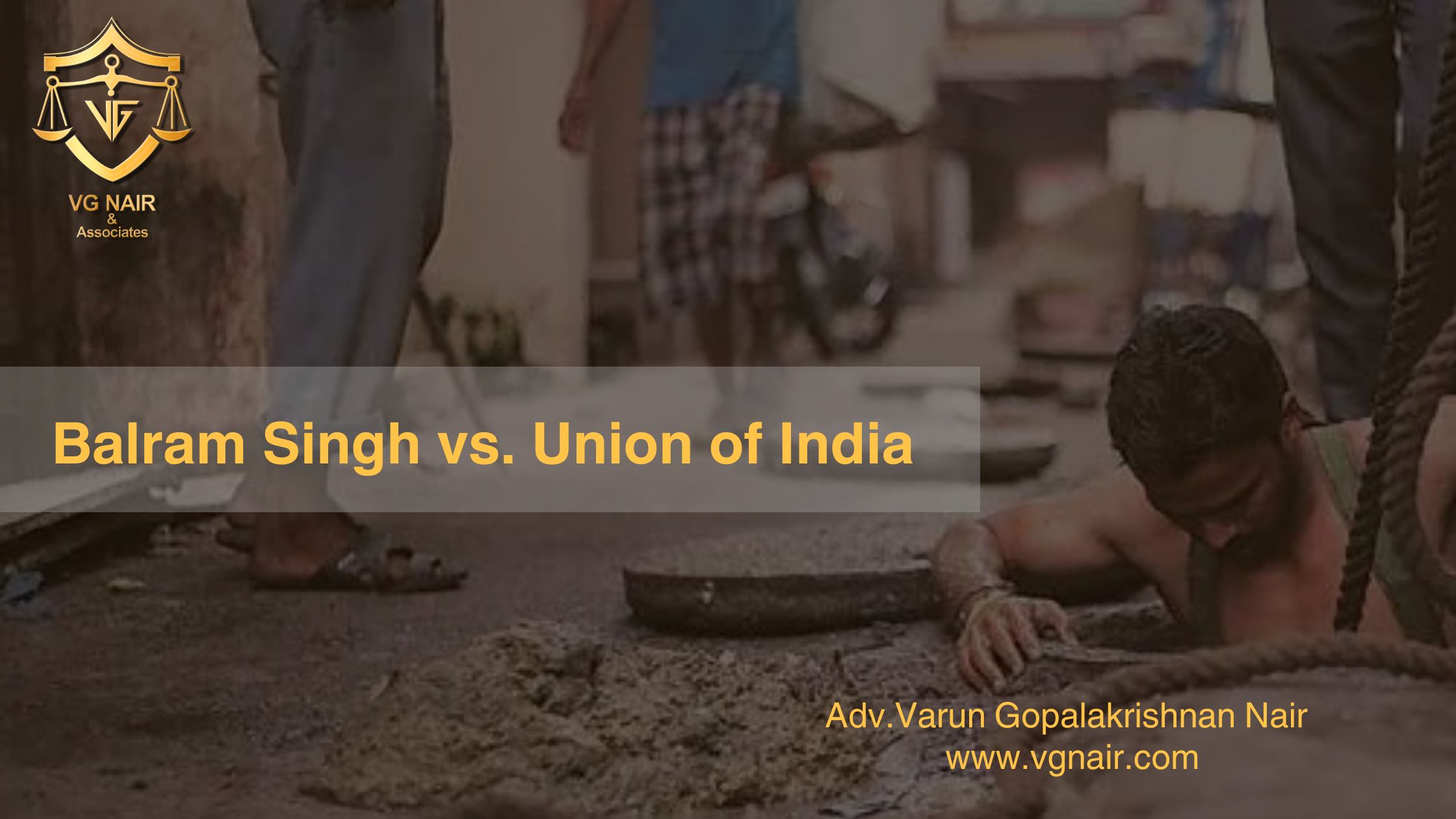Balram Singh v Union of India

The Supreme Court's judgment in Balram Singh v. Union of India marks a pivotal step towards eradicating manual scavenging in India, focusing on the dignity and rehabilitation of manual scavengers.
Supreme Court's Directives
In its landmark decision, the Supreme Court directed the Union Government to rigorously implement existing laws prohibiting manual scavenging. The Court reiterated the ban on manual sewer cleaning, reinforcing that no individual should be forced to enter or clean sewers under any circumstances. These directives aim to eliminate practices that degrade human dignity and compel marginalized individuals to engage in life-threatening work.
Rehabilitation and Compensation for Victims
A notable aspect of the judgment was the Court’s decision to significantly increase the compensation for families of those who lose their lives while performing manual scavenging. The compensation amount was raised from Rs. 10 lakhs to Rs. 30 lakhs, reflecting the severity and risks associated with the work. Furthermore, the Court laid out clear guidelines to ensure the rehabilitation of affected workers and their families. These guidelines include providing educational support and skill training to help former sewer workers and their dependents transition to more dignified and safer employment opportunities.
Accountability Mechanisms for Contracting Agencies
The Court introduced strong accountability measures to prevent sewer-related deaths, particularly when the work is outsourced to contractors. The judgment stated that if a death occurs due to unsafe conditions during outsourced work, the contracts should be terminated. Additionally, financial penalties should be imposed on the contracting agencies involved. This provision aims to deter negligent practices and ensure that safety protocols are followed rigorously.
Comprehensive National Survey
Recognizing the need for accurate data to address the issue effectively, the Court instructed the National Commission for Safai Karamcharis, along with other relevant government bodies, to conduct a nationwide survey. This survey is intended to identify all individuals engaged in manual scavenging. The data collected will be used to facilitate targeted rehabilitation efforts and ensure that no individual is left behind in the push to end manual scavenging.
Legislative Intent and Judicial Interpretation
The Supreme Court underscored the need to interpret existing laws, such as the Employment of Manual Scavengers and Construction of Dry Latrines (Prohibition) Act of 1993 and the Prohibition of Employment as Manual Scavengers and Their Rehabilitation Act of 2013, in a manner that prioritizes the welfare of manual scavengers. The judgment stressed that the legislative intent behind these acts was to completely eradicate manual scavenging and to rehabilitate individuals trapped in this inhumane practice. By reinforcing the social welfare aspect of these laws, the Court highlighted that their enforcement must align with the broader objective of restoring dignity to affected individuals.
Social Implications of the Judgment
The Court's judgment goes beyond the legal realm and addresses the social injustice experienced by manual scavengers. The historical marginalization of these communities is linked to larger issues of caste discrimination and economic inequality, which the judgment addresses in the context of social justice and constitutional principles. By recognizing manual scavengers as a vulnerable community that has faced generations of exploitation, the Court calls for proactive legislative and executive action to uplift them and ensure their inclusion in society.
Conclusion
While establishing a robust framework, the judgment recognized the challenges in implementing relevant laws. It called for immediate corrective measures and clarified the responsibilities of both state and central governments in addressing manual scavenging practices effectively.
Published by Adv.Varun Gopalakrishnan Nair
